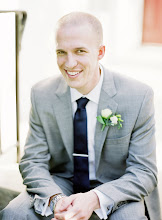MANCHESTER, Tenn. -- The biggest music festival in the country was a little different this year. And everybody knew it.
Sure, the Bonnaroo Music and Arts Festival was on the same 700-acre farm, in the same tiny city of Manchester, Tenn. As always, festival-goers braved the elements, spending their days under the hot sun and their nights surrounded by an 80,000 person tent city that made K-ville look like a Lego set. And the music lineup featured many of the usual suspects, including Bela Fleck & the Flecktones, My Morning Jacket and moe.
But this year's Bonnaroo saw noticeably fewer tie-dye shirts, more pairs of dark-rimmed glasses and the one band everyone was talking about: Radiohead.

Scheduling the British art-rock heros to headline Bonnaroo was the last step in a process of moving toward a more diverse mix of artists, a process that had already been a few years in the making.
It meant the end of Bonnaroo as a hippie music festival.
Bonnaroo began as a jam band haven, born and bred for the Phish lovers who pined for the good old days when the love was free, the drugs were plentiful and the music was groovy.
"[Bonnaroo] was the first time that someone said, 'we're getting every band that these people like to see and getting them all together,'" said Bryan Rodgers of the Home Grown Music Network, a group of music promoters that deals extensively with the jam scene.
Of course the lineup had a variety of jam, bluegrass, folk, funk and other styles from the beginning; but those first few years were decidedly geared toward hippies' musical tastes.
Now in its fifth year, the festival's musical offerings-as well as its fans-have slowly become more eclectic. Twenty-minute mandolin jams and meandering guitar solos are still around, but they're sharing the stage with an increasing number of hip-hop beats and emo crooning.
"I think it's changed completely over the past five years," Rodgers said. "I think Radiohead had a lot to do with it this year."
Rodgers said he personally welcomes the growing diversity, as do many die-hard jam band listeners. But not all of them see it as a good thing.
"There are a lot of jam band fans who just cannot stand Radiohead," Rodgers said.
Others said they thought the broader demographic attracted by the plethora of better-known names had made the festival less fun.
"It was never a problem with the music," said Lisa Benefield, a patchouli skirt-wearing 24-year-old who chose not to attend Bonnaroo this year. "It was a problem with the community that showed up. Like all the preppy kids who are just going 'cause it's the cool thing to do."
Benefield said she prefers smaller jam band festivals, which take place across the country throughout the summer.
Seth Dennis, a student at the University of North Carolina at Chapel Hill, said he didn't want to go this year because he thought there were too many indie rock bands.
"At indie shows, everybody just stands around," he said. "No one gets into it."
Perhaps the most surprising complaint: a number of hippies lamented that the drug culture at Bonnaroo had gotten out of hand.
What?
After a few years, the festival had earned a reputation as the place to be for hard drugs like ecstasy and LSD, said Duke senior Laura Pyatt, who attended Bonnaroo this year. While drugs have always been a part of hippie culture, a growing faction of people started going to Bonnaroo just to experience its Candyland-like drug scene.
"I saw a lot of irresponsible drug use last year," Benefield said.
It's almost as if many of the aspects of Bonnaroo that had attracted hippies to the festival in the first place-the diverse music, the drugs-had been pushed too far, and some jam fans became disillusioned with the whole operation.
The secret of Bonnaroo got out, and many of the carefree folks who thrive on operating at the fringe of society were shying away from the baseball cap-wearing masses who wanted in on the action.
To be fair, there were still plenty of dreadlocks at Bonnaroo this year. There were still plenty of bare feet, plenty of unshaven faces and plenty of good vibes-plenty of hippies.
 But they no longer dominated the festival like they once did. There were also plenty of frat boys, plenty of hipsters and plenty of middle-aged Tom Petty fans.
But they no longer dominated the festival like they once did. There were also plenty of frat boys, plenty of hipsters and plenty of middle-aged Tom Petty fans.The hippie jam band festival has become the American music festival, in all its diverse glory. And while some weren't thrilled with the change, few can deny that Bonnaroo has earned a prominent place in the fabric of American music culture.
"We want to be something that's around for 30 years, like a Glastonbury or a New Orleans Jazzfest," Bonnaroo founder Rick Farman told the New York Times. "We want to be an iconic event."
Available online here
